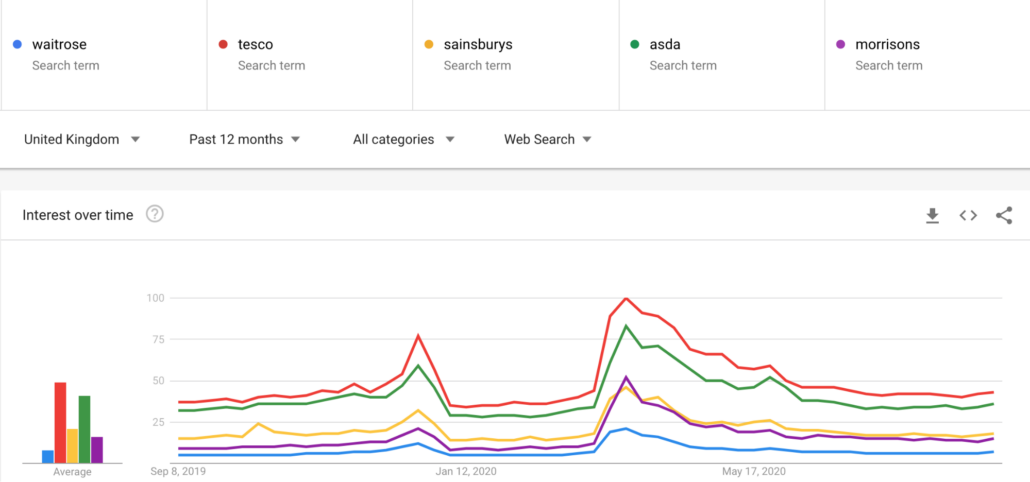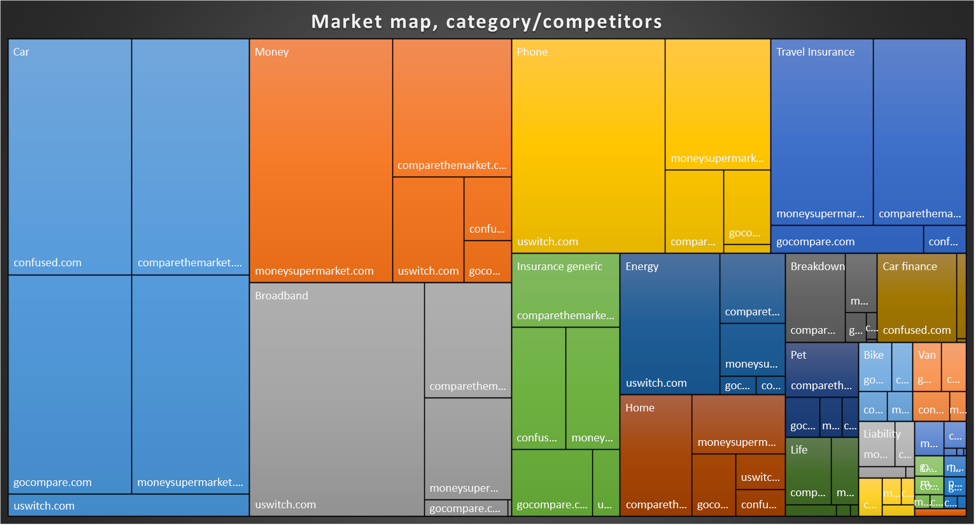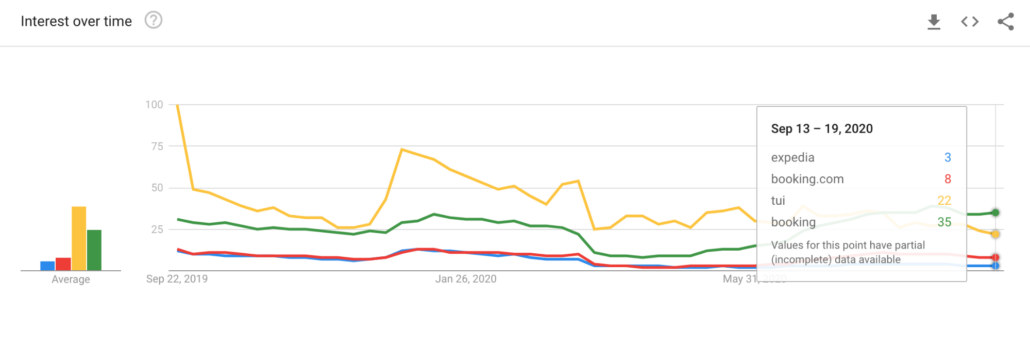For a long time, I think it’s been clear that brand is an important signal in what Google values for ranking websites.
But what does ‘brand’ mean in an SEO context?
In the early days of Google, PageRank (named after Larry Page – also sounds much better than BrinRank) was introduced to rank sites based upon the quality and quantity of inbound links to a specific page and domain. Of course, it’s become much more sophisticated since, and there are now other factors that are thrown into the mix.
Let’s forget about Google for a minute, though. What would you consider to be the factor of a strong online brand?
- High search volume in branded queries, including product lines / names etc
- High direct traffic, because people know who you are and go straight there
- Strong link reputation from authoritative sources
- Featured in popular / relevant publications (brand mentions or any type of link)
- Building an online audience via content marketing that people subscribe to
- Popular social media followings/engagement
- Mix of traffic sources, paid, organic, social, direct, referral etc…
- Reviews of the brand (Google, TrustPilot etc)
I believe the key thing here is that it has to be holistic. You might not need all of these, but you certainly need a mix. Just having a strong link reputation, but nothing else, isn’t likely to be enough to build yourself into a position where you deserve to rank.
The one I keep coming back to that ties it together is brand popularity, specifically measured by branded search.
The more I look into this, I really think brand reputation is a key consideration brands should be paying more attention to, in terms of driving real organic growth as a holistic approach.
Yet, this is often overlooked – probably because it feels out of our control, above our pay grade or possibly outside of our best interests.
Retail: Supermarkets
I’ve chosen supermarkets as they are among the biggest TV advertising spenders in the UK. Here’s a look at their organic performance for the leading brands:

There’s quite clearly a strong correlation here between organic visibility and brand popularity, more so than links (which are all much closer together) and content (where more doesn’t necessarily mean better):

Please note: this Google Trends view only works if it’s all on a single report, as results are relative to the comparison queries. In a real-world situation, you would look to build out a deeper analysis on a wider range of brand term variations.
It also makes sense that organic visibility would be stronger because this is built up of both branded and non-branded organic search terms. So if you have a stronger brand, you’re already off to a stronger start.
Finance: Product-led SEO
You can apply this to a number of different sectors, for example, Pascal Moyon recently analysed organic market share for insurance at a product level:

If you were to look at this purely on a page-level basis, as opposed to the category-level/long-tail queries above, taking car insurance as the high-value example, this is the type of analysis you can see:

This is very top-level, however, I like the AHREFS page value model to help build an early business case, e.g. if you’re GoCompare what would you pay for an extra $1.4m per month ($16.8m per year) of value? Just for improving performance on one page! MoneySuperMarket’s growth opportunity is worth an additional $2.2m per month ($26.6m annually) if you benchmark against Compare the Market as leaders.
That’s the ‘why’, then you need to figure out ‘how’ to catch them.
Backlink quality / quantity:

If you look at the analysis above, Moneysupermarket is the strongest in terms of links, Compare the Market second, and GoCompare third. So, if you’re Moneysupermarket, more links probably isn’t the route to success (certainly not guaranteed, anyway).
The clear gap, from a reputation perspective, is in the strength of the brand. Obviously, there are other factors at play and by all means level the playing field as much as you can in terms of technical SEO, on-site content and link reputation.
The small marginal gains can pay off – especially on a competitive SERP where the difference between first and second is like winning the league vs qualifying for the Champions League. In both cases, you’re leaving far too much money on the table to be outside the top four!
That said, everyone wants that silver bullet in SEO, but you can reach a point where you’re all trying to outdo each other on the same things. At that stage, I often think it’s focusing on the big wins that really matter.
The big difference here, in my opinion, is brand popularity.
Take another look at the first table and it shows a very strong correlation between the page value (AHREFS) and the brand popularity (Google Trends). It’s a similar trend to what we see with the leading supermarkets.
Interestingly, if you go down the brand + keyword route, GoCompare are winners. This is something I would take to mean that while it’s nice to build category-level relevance around a brand, it’s the overall brand strength that is the more important factor here:

If you’re playing catch-up, that’s when it would be sensible to look at what you can do to meaningfully build a brand.
Brand building via TV advertising and online media will clearly have a big impact. From an online perspective, that could mean content marketing to build an engaged owned audience, rather than digital PR that generates links/spikes of rented attention.
Travel: one final example…
To complete the full set, I want to show how this works in the travel, retail and finance sectors, as each can react differently.
Using the same analysis within travel, it’s clear that in terms of overall UK organic search visibility, booking.com are clear market leaders, ahead of Expedia and TUI. There’s a reason I’ve included Thomas Cook, too, which I’ll address later.

However, when you look at the Google Trends history, TUI traditionally has the most popular brand.
 This has now been overtaken by “booking” although I’m conscious that is a very generic phrase, so for the purposes of the table below I’ve just used the “.com” variation. Expedia’s popularity is surprisingly very low in comparison.
This has now been overtaken by “booking” although I’m conscious that is a very generic phrase, so for the purposes of the table below I’ve just used the “.com” variation. Expedia’s popularity is surprisingly very low in comparison.

What can we learn from this? I think the answer is clear: having strong brand popularity is very important, but from an SEO perspective it comes back to ensuring the 3 pillars of SEO (tech SEO, on-site content and reputation) are all as strong as possible.
In this case, Booking.com has an overwhelmingly vast amount of content even when compared to Expedia as one of its closest competitors. TUI has the strongest UK brand, but with only a fraction of the content, and is nowhere near the levels of visibility that Booking.com or even Expedia have.
The reason I included Thomas Cook is that today, it’s been announced that thomascook.com is being reincarnated as an online brand. Thomas Cook was clearly declining as a brand before they went into administration, but it still had a large amount of popularity (see below), ahead of the administration news spike last year they placed 2nd in Google Trends branded demand ranking:

I think this will be an interesting one to watch develop. If you look back at the Sistrix visibility chart, Thomas Cook has the potential to recover to the current level of TUI.
Will the previous brand strength and still largely active link reputation be able to see them bounce back? I think the answer to that will largely depend on how much content they can restore that was driving their previous visibility.
Summary
In SEO, you’re always in one of two positions; you’re winning, or you’re trying to catch someone:
- If you’re winning, continue to strengthen your brand and maintain that position at the top. This can be a tricky position, the only way is down, so it’s important not to get complacent.
- If you’re trying to catch someone, figure out why they’re winning and do everything you can to get up-to-speed. Velocity is hugely important here if you spend the next 12 months trying to get to where they are now, that’s making a big assumption that they will stand still. Everything is a moving target, make sure you factor that in.
Brand is hugely important as a ranking factor. But it doesn’t just mean links. It’s also your overall reputation, which if measured as popularity of brand search demand can often correlate with organic performance.
Brand doesn’t have to mean brute force media though, there could be other creative ways to spark people into searching for your brand / products online and building popularity (social media, PR awareness, building an audience with content, email, online video channels, offline ads, word of mouth etc). Also depending on how memorable (catchy/annoying) or how clear the call-to-actions on your TV ad are, this can make a large difference to branded search demand.
Even then, reputation (what I would class as branded search demand + link authority) is only one part of the jigsaw.
In SEO, you always have to look at where Google is going. We talk about Google’s E-A-T (expertise, authority, trust) model, but it wasn’t really a new concept. It’s all part of becoming the brand that deserves to rank.
With tactics, the only constant is change, but the fundamentals haven’t changed since I’ve been doing SEO (2003).
That always comes back to 3 core pillars, as Ian Lurie recently explained very well:
- Visibility – ensuring your technical SEO is as strong as possible to allow search engines to access your site to crawl, index and rank your content.
- Relevance – have you got the content that deserves to rank?
- Authority – links are still an important factor here, but as mentioned in this post authority/reputation is now more holistic related to the overall brand.
If you have the strongest brand and you’re not winning in SEO, that potentially indicates a big opportunity that you could and should be doing better, and it likely involves focusing on improving performance in one of the 3 key areas you’re weaker in.
As always, it involves a SEO strategy-first approach to understand where the opportunity lies, removing any preconceived notions on what activity you should be doing and identifying your strengths and weaknesses relative to the competition. Then you can put together a clear plan on how to best win.



